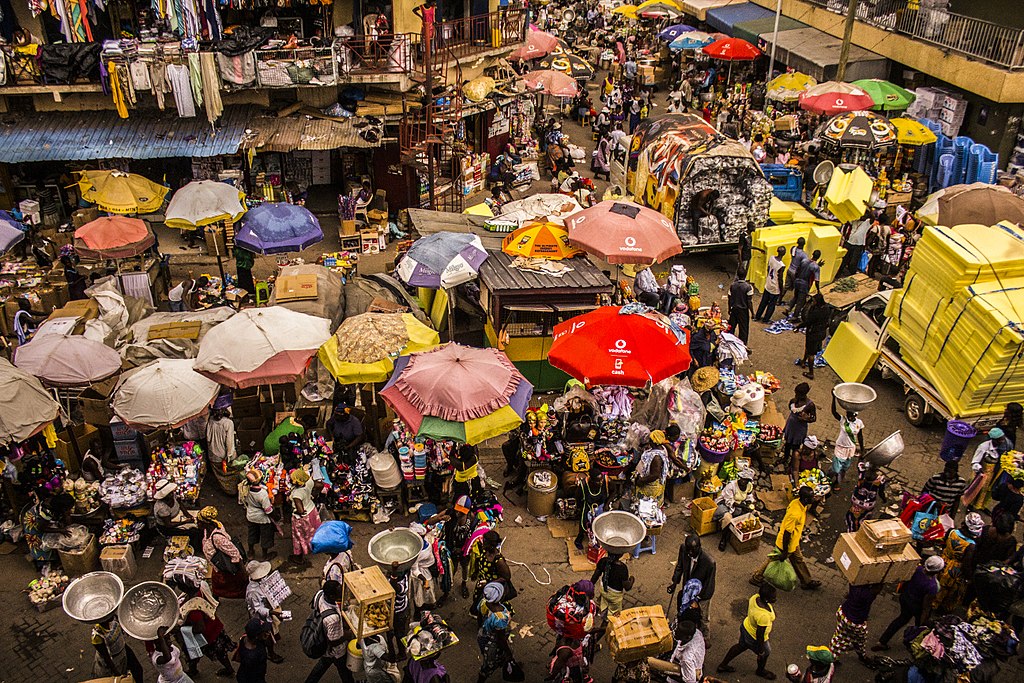What happens to your clothes after you donate them?

Markets, like this one in Accra, Ghana, are saturated with fast fashion items.
Anna Johnson - Where do you go when you want to get a new trendy shirt? It's probably a fast fashion outlet, offering up-to-date styles at bargain prices. These items are often very low quality and are only meant to be worn a handful of times. There is a vast network in place that enables you to make that purchase. But your closet isn’t the end of the line.
Even when you’re done with the shirt, you are still participating in that global network. You act as an individual node, unknowingly connected to the rest of the network, but still engaging with the network’s cycle. Many people choose to donate unwanted clothing so it can be resold or recycled, but few of these donated items are resold to thrifty shoppers. The vast majority are sold in large bales to overseas vendors at deep discounts. These vendors will sell what they can, but everything that can’t be sold or salvaged is dumped into landfills and rivers far away from the store where you bought the shirt, polluting already fragile ecosystems. Vendors say the fast fashion items that have gained popularity in recent years are saturating the market and making their jobs much harder. They’re receiving a higher volume of low-quality goods they can’t sell. Every item they can’t sell ends up as pollution in their community. Western countries are effectively exporting garment pollution to avoid dealing with it themselves. Despite the pollution it creates the recipient countries must continue to participate in this network to survive economically. The textile resale and recycling market in Ghana employs around 30,000 people. They’re the largest import market for used clothes, bringing in 15 million garments a week. Six million of those garments end up in the trash or, more likely, in the surrounding water systems where they kill wildlife, limit access to clean water, and contribute to global ocean pollution.
These networks are operating on several different levels of scale. Individuals contribute to them by creating demand for fast fashion items. This demand creates the networks of the global distribution systems. The environmental pollution from these garment salvage markets is a problem on every scale, limiting individuals' access to clean water and creating a massive pollution problem for local and national governments and international organizations. The individuals in these communities are taking action to make garment manufacturers take responsibility for clothing pollution. In May, a group from Ghana visited the European Commission and European Environment Bureau. By elevating the issue to the international level, the Ghanaian clothing vendors have an opportunity to shift the scale of the issue from an individual to an international level.
Photo Credit: Samuel Lamptey, CC BY-SA 4.0, via Wikimedia Commons

